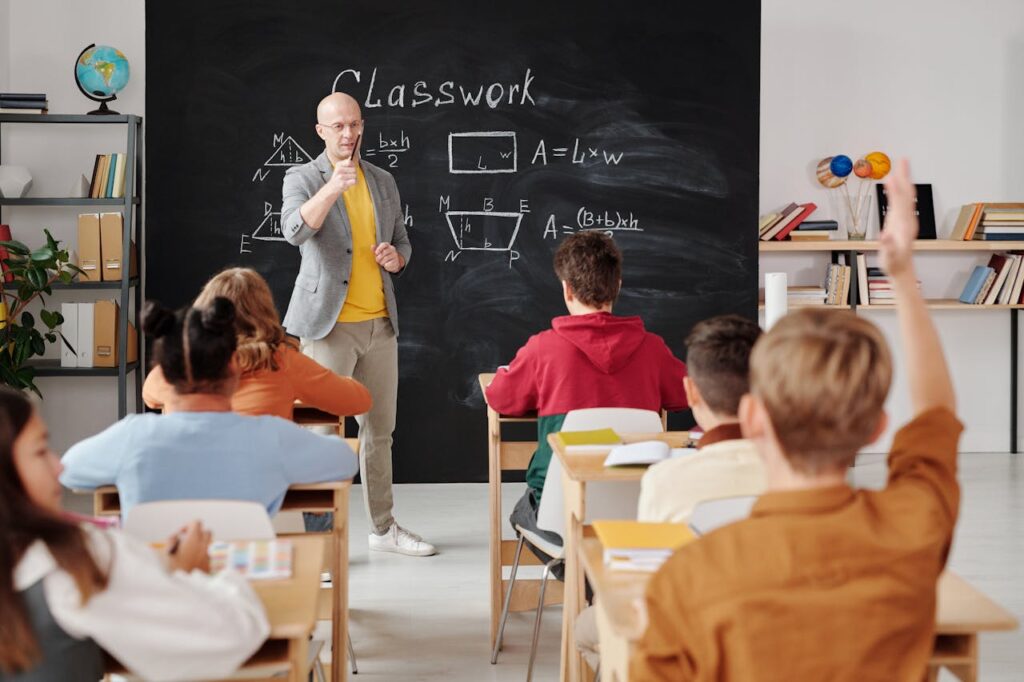
Engaging K-12 students in the classroom is essential for fostering a love for learning and ensuring academic success. By using engaging and innovative teaching strategies, students can get engaged and find learning to be interesting and exciting. Educators can foster a dynamic learning environment that promotes curiosity and active involvement by integrating enjoyable activities into the curriculum. These captivating techniques support students’ overall development in addition to improving academic achievement. Explore five exciting ways to make learning fun and impactful for K-12 students, transforming the classroom into a vibrant space of discovery and enthusiasm.
1. Interactive Storytelling Sessions
Interactive storytelling sessions are an effective means of involving students and improving their educational experience. Storytelling captivates the imagination and helps students understand complex concepts through relatable narratives. Educators add interactive components to their storytelling sessions to make them more immersive and engaging, such as role-playing, props, and multimedia presentations. Students are encouraged to actively engage with the narrative, ask questions, and provide their interpretations while using this approach. Interactive storytelling enhances critical thinking and communication abilities in addition to understanding and retention. Teachers can create learning experiences that kids remember long after class ends by bringing stories to life.
2. Hands-On Science Experiments
An engaging and successful method of getting K–12 students interested in learning scientific topics is through hands-on science activities. Students can witness and investigate scientific principles in action through experimentation, which helps to make abstract ideas more concrete and intelligible. This method fosters a sense of curiosity and encourages students to ask questions and seek answers through experimentation. Practical experiments also foster the development of critical abilities, including problem-solving, analysis, and observation.
Furthermore, carrying out research in groups fosters cooperation and teamwork, which improves social skills. Educators foster a love of science in their students and motivate them to seek further studies in the subject by including frequent scientific experiments in the curriculum.
3. Technology and Digital Tools
The use of digital tools and technology in the classroom can greatly improve learning results and student engagement. Learning becomes more dynamic and accessible with the usage of educational applications, multimedia materials, and interactive digital platforms. With its ability to provide auditory, visual, and kinesthetic learning experiences, technology can accommodate a variety of learning preferences. By taking students to far-off locations or historical events, for instance, virtual reality can enhance student engagement and make learning more immersive.
Additionally, digital tools such as trivia today games can make learning fun and competitive, encouraging students to test their knowledge and enjoyably learn new facts. Educators build a contemporary and stimulating learning environment that equips students for the digital era by embracing technology.
4. Creative Arts and Music Integration
The inclusion of music and creative arts in the curriculum can have a significant positive impact on student learning and engagement. Learning becomes more dynamic and entertaining when subjects are explored and expressed uniquely through the arts. Activities such as drawing, painting, drama, and music allow students to develop their creativity and critical thinking skills. For example, teaching scientific topics or historical events using music might help students remember and engage with the material.
Including music and the arts in the classroom can help in the development of kids’ emotional intelligence and cultural understanding. By making learning a multisensory experience, educators can cater to diverse learning styles and create a more inclusive and stimulating classroom environment.
5. Outdoor Learning and Field Trips
Outdoor learning and field trips offer an exciting way to engage students and bring lessons to life. By extending learning outside the classroom, students can implement what they have learned in real-world situations, increasing the relevance and significance of their education. Students are exposed to different surroundings and experiences through field visits to scientific institutes, historical sites, natural reserves, and museums. These experiences also provide hands-on learning opportunities.
Students’ comprehension of ecological and environmental topics can also be improved by engaging them in outdoor activities like gardening, nature hikes, and environmental projects. These encounters facilitate hands-on learning and foster a stronger bond between students and the material. Incorporating field excursions and outdoor learning into the curriculum allows educators to provide memorable and significant learning experiences that stimulate inquiry and discovery.
Conclusion
Engaging K-12 students through innovative and interactive methods is crucial for fostering a love for learning and ensuring academic success. Teachers can create a dynamic and exciting learning environment by combining technology, hands-on scientific experiments, interactive storytelling, creative arts, and outdoor learning into the curriculum. These strategies enhance academic performance and contribute to student development, making learning fun and enriching.


